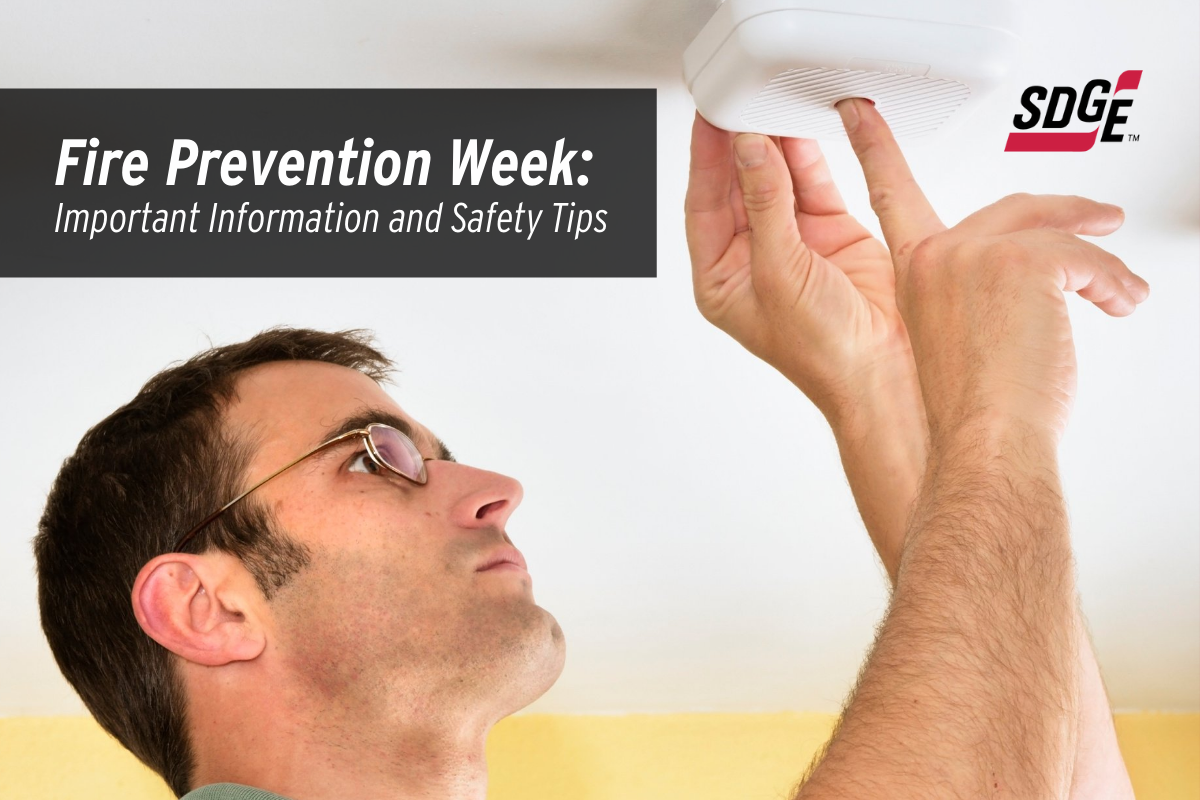The National Fire Protection Association (NFPA), the official sponsor of Fire Prevention Week™ for 99 years, has announced "Learn the Sounds of Fire Safety™" as the theme for this years' Fire Prevention Week, Oct. 3 to 9.
According to the NFPA, this year's Fire Prevention Week campaign, "Learn the Sounds of Fire Safety!" is so important because it raises awareness about different sounds smoke and carbon monoxide (CO) alarms make.
Know the Sound
Low batteries are the most common reason smoke detectors beep when there is no smoke or fire. As the battery weakens, the device will beep regularly to let you know it's time to replace the battery. During an emergency a smoke alarm will beep three times in a loud, repeating pattern. Between each set of three beeps will be a slight pause. When a smoke alarm senses smoke, everyone should leave home safely and quickly.
When a CO alarm produces four beeps and a pause, that signals an emergency and means that carbon monoxide has been detected, and you should move to fresh air and call 9-1-1 immediately. If the CO alarm produces one beep every minute, that means it is time to replace its batteries.
What is the difference between a smoke alarm and carbon monoxide (CO) alarm?
Most people ask the question, "Do I need both?". According to the National Fire Protection Association, the answer is "yes." It is of the utmost importance that families make sure that they have smoke and CO alarms in their home and meet the needs of all family members, including those with sensory or physical disabilities.
Smoke alarms quickly sense smoke, alerting you and your family to danger and should be placed in bedrooms, hallways and basements.
CO alarms detect the presence of carbon monoxide, which is an odorless, colorless gas that displaces oxygen in your body and can quickly render you unconscious from carbon monoxide poisoning. Household appliances, such as gas fireplaces, boilers, central heating systems, water heaters, cookers, and open fires which use gas, oil, coal and wood, may be possible sources of carbon monoxide gas. It happens when the fuel does not burn thoroughly. Fumes from specific paint removers and cleaning fluids can also cause CO poisoning. The only safe way to know if carbon monoxide is present is to install carbon monoxide detectors on every level of your home and in sleeping areas.
Safety Devices for the deaf or hard of hearing
Smoke alarms save lives. But for those who are deaf or hard-of-hearing they cannot depend on the sound of the alarm, which is why there are pillow and bed shakers and strobe lights that can be installed to work when a smoke alarm sounds. In addition, most smoke alarm companies offer alarms with strobe lights.
It's also recommended that those with decreased hearing sleep with their mobile phone and hearing aids close to the bed.
Special devices ensure everyone is alerted in case of fire or high CO levels:
- When the smoke alarm sounds, strobe lights flash to alert people who are deaf or hard of hearing of a possible fire when they are awake.
- When they are asleep, a pillow or bed shaker should be used to wake and alert them to fire conditions so they can escape. This device is activated by the sound of a standard smoke alarm. People who are deaf may find that the shaker paired with high-intensity strobe light is helpful to wake them.
- Smoke and CO alarms can be installed that uses a low-frequency sound. These will work better to wake a sleeping person who has mild to severe hearing loss.
It is important to research and pick devices that are listed by a qualified testing laboratory, which is often written on the product's packaging. Products can be found in home improvement stores, online and on manufacturer websites.
Make a Plan
Don't be caught off guard by an emergency. Before an alarm in your home makes a beeping or chirping sound, make sure that you and your family have an evacuation plan in place that you have talked about and practiced.
- Draw a map of your home listing all doors and windows. Make sure that everyone in your household studies this map.
- Know at least two ways out of every room. Be certain that all doors and windows open quickly in the event of an emergency and that there is nothing blocking them.
- Pick a landmark (tree, mailbox, phone pole, etc.) a reasonable distance away from the house as a meeting location.
- Practice evacuating using different exits out of your house.
- Keep pathways and hallways lit with night lights and free from clutter to ensure everyone can get out safely.
- Include your pets and service animals in your emergency plans.
- Test your smoke alarms once a month to make sure they are working correctly.
For more safety information, visit SDG&E's Wildfire Safety page. The American Red Cross also works with local fire departments and volunteers to provide home fire safety education and install free smoke alarms in homes that don't have them or need them replaced. For more information and to make an appointment, visit their local Sound the Alarm program webpage.


